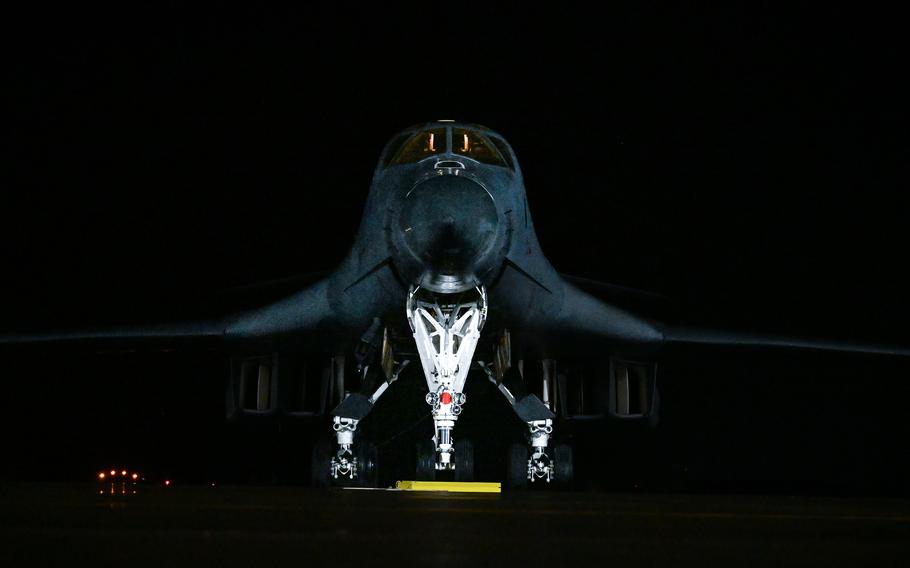Air Force sends supersonic bombers to Japan amid rising regional tensions
This piece, by Seth Robson, heavily quotes CSP Senior Fellow Grant Newsham.

A B-1B Lancer from Dyess Air Force Base, Texas, arrives at Misawa Air Base in northeastern Japan, April 15, 2025. (Mattison Cole/U.S. Air Force)
American B-1B Lancers arrived this week at Misawa Air Base for their first rotational bomber task force mission in Japan, Pacific Air Forces said Tuesday.
The aircraft, along with airmen and support equipment from the 9th Expeditionary Bomb Squadron at Dyess Air Force Base, Texas, landed at the northern Japan air base that day, according to a PACAF news release.
The number of bombers and airmen, as well as the expected duration of their stay, were not cleared for release by PACAF, Capt. LeeRoy Stark, a spokesman for the 35th Fighter Wing at Misawa, said in an email Thursday.
The bomber mission supports strategic deterrence as well as training with allies, partners and joint forces, according to the PACAF statement.
The Air Force routinely deploys Lancers, B-52 Stratofortress bombers and B-2 Spirit stealth bombers around the world on task force missions. The deployments began in January 2018 and have continued regularly since 2020.
“While the missions for each [bomber task force] may vary, the overall goal remains the same: assure allies and deter adversaries,” says the Air Force Global Strike Command website.
Bomber task force deployments are also intended to familiarize aircrews with bases and operations in various parts of the world.
The mission “showcases the U.S. commitment to deterring threats and maintaining regional stability,” Lt. Col. Christopher Travelstead, director of operations for the 9th Expeditionary Bomb Squadron, said in PACAF’s release.
North Korea threatened unspecified retaliation after U.S B-1B bombers on Tuesday flew over South Korea with South Korean warplanes, the Associated Press reported Thursday.
In February, two Lancers from Andersen Air Force Base, Guam, flew through South Korean airspace alongside three U.S. F-16 Fighting Falcons from Osan Air Base, South Korea; four Marine Corps F-35Bs from Marine Corps Air Station Iwakuni, Japan; and four South Korean F-35As and F-15K Slam Eagles.
In January, Japanese F-2s and South Korean F-15K Slam Eagles escorted a pair of Lancers over the Sea of Japan, also known as the East Sea.
Read more HERE.
- China’s Act of War Against PM Takaichi and Japan - November 24, 2025
- Panel Discussion: Are H-1B Visa Holders Replacing US Workers? - November 18, 2025
- Grant Newsham Speaks on US China Military Hotline - November 11, 2025
